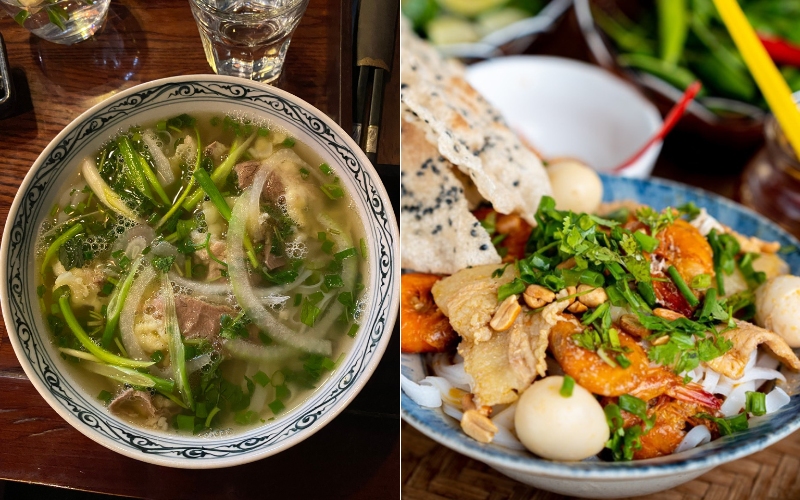
Pho Hanoi, Pho Nam Dinh, and My Quang Recognized as National Heritages
- on Aug 21, 2024 By: Phuong Mai NGUYEN
On August 9th, the Ministry of Culture, Sports, and Tourism officially added Pho Hanoi (Hanoi-style Pho), Pho Nam Dinh (Nam Dinh-style Pho), and My Quang (Quang Nam province-style noodle soup) to the list of National Intangible Cultural Heritage.
These three dishes are not only representatives of the cultural identity of their home regions but also illustrate the cultural richness and diversity of Vietnam. Handed down from generation to generation, these traditional recipes embody the creativity and resilience of the Vietnamese people, ensuring their continued presence.
Pho Hanoi: A classic symbol of Vietnamese gastronomy
Pho Hanoi has long been considered an emblematic specialty of the capital and Vietnam as a whole. Surprisingly, Pho began its journey as a street food, spreading its bewitching aroma from the fragrant broth throughout the city.
Addresses for the best Pho Hanoi
Back in the 20th century, Mr. Bui Chi Thin, one of the pioneers of Pho vending in Hanoi and also the founder of a famous Pho brand called “Pho Thin Bo Ho” began his career with a modest stall around Hoan Kiem Lake. His Pho soon attracted the attention of the locals, leading to the opening of his first restaurant at 61 Dinh Tien Hoang in Hoan Kiem District. Today, this small establishment remains one of the most popular places for a bowl of Pho in Hanoi.
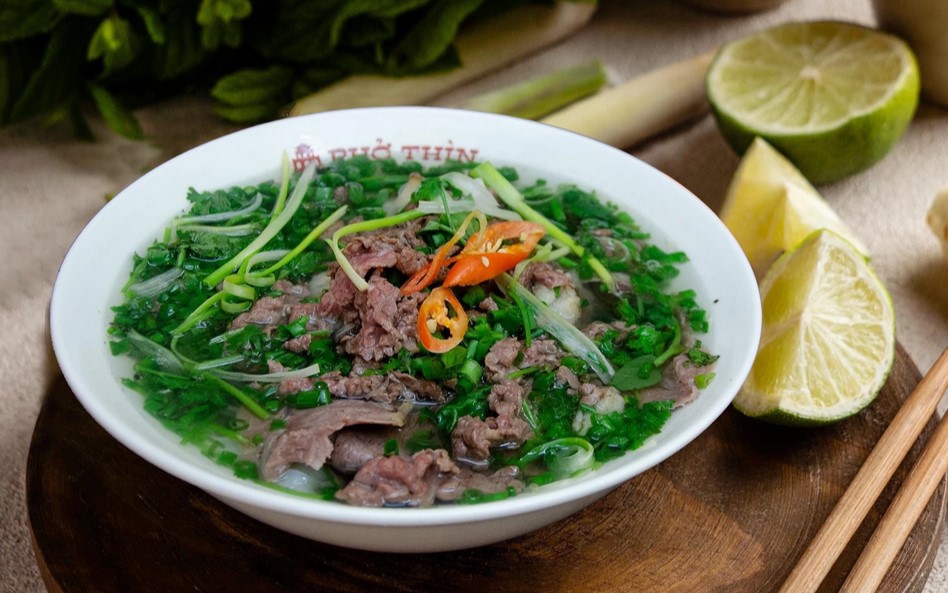
Pho Thin
Not far from Dinh Tien Hoang Street, at 33 Hang Giay located another renowned Pho spot. This Pho brand, called “Pho Ong Dao” shares a similar history of development to Pho Thin Bo Ho, as Mr. Vu Van Tam, a well-known chef and the founder of the brand, started his itinerant stall in the 1950s, selling his Pho to passers-by on Nguyen Thien Thuat Street and Tran Nhat Duat Street.
Another key name in the story of Pho in Hanoi is Mr. Cu Nhu Than, who passed on his expertise to his daughter, Ms. Cu Thi Thanh Xuan. After achieving her father’s legacy, Ms. Xuan went on to found the famous “Pho Chieu” on Hang Dong Street and “Pho 49A Bat Dan” on Bat Dan Street, contributing to the reputation of this culinary specialty on the Vietnamese gastronomic scene.
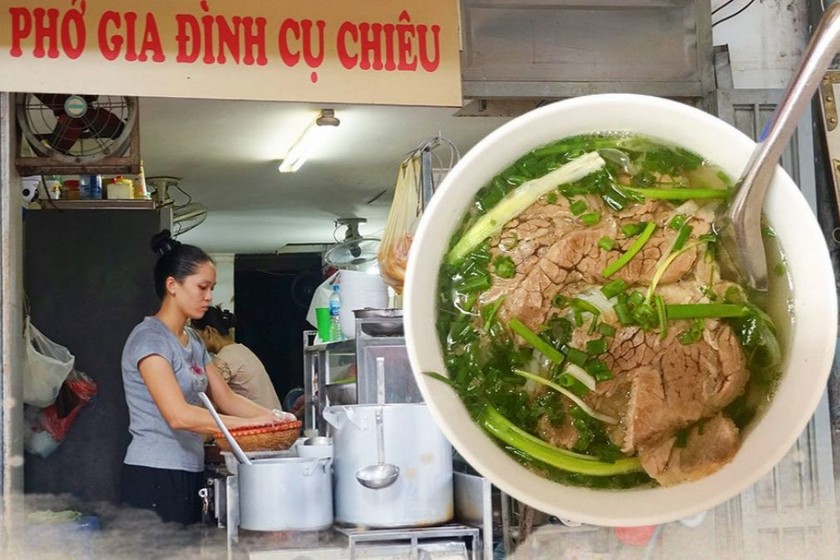
Pho Chieu
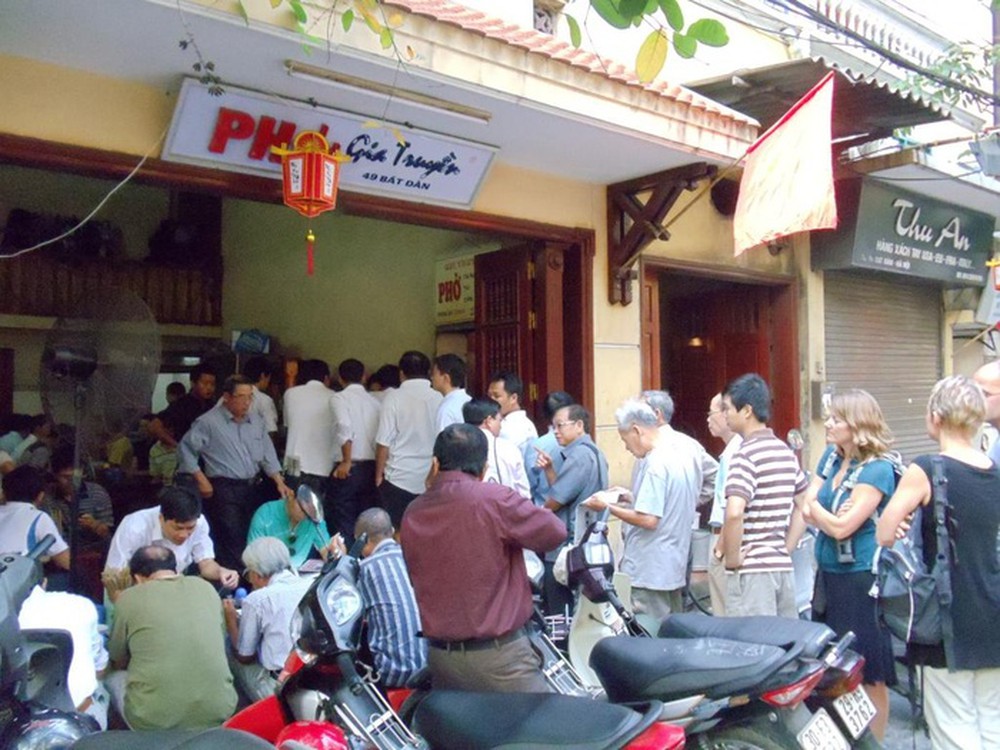
Pho Bat Dan
A National cultural symbol
Hanoi’s Pho is not just a dish, but an inseparable part of the identity of Hanoians and lovers of the capital. Far beyond its popularity in Vietnam, Hanoi's Pho has gained worldwide renown, to the point of appearing in international dictionaries as a word. Today, Pho Hanoi can be found in over fifty countries, becoming an undisputed symbol of Vietnamese gastronomy on an international scale.
One interesting thing is that the majority of Pho Hanoi establishments do not seem to put much effort into choosing their name. The names are remarkably simple, often composed of the chef’s first name or associated with their character traits. Emblematic examples include Pho Chieu, Pho Tu Lun, Pho Tinh, Pho Suong, Pho Vui, Pho Nho, Pho Cuong, Pho Khoi Hoi, Pho Thin Lo Duc. These names, in tandem with reflecting a personal touch, embody the familiarity and ubiquity of Pho in the daily lives of Hanoians.
From the streets to site-based: the evolution of Pho business in Hanoi
The Pho business is closely linked to the capital's socio-economic evolution. Once sold by street vendors roaming the streets days and nights, this emblematic dish has gradually found its way into fixed establishments, becoming a veritable local institution.
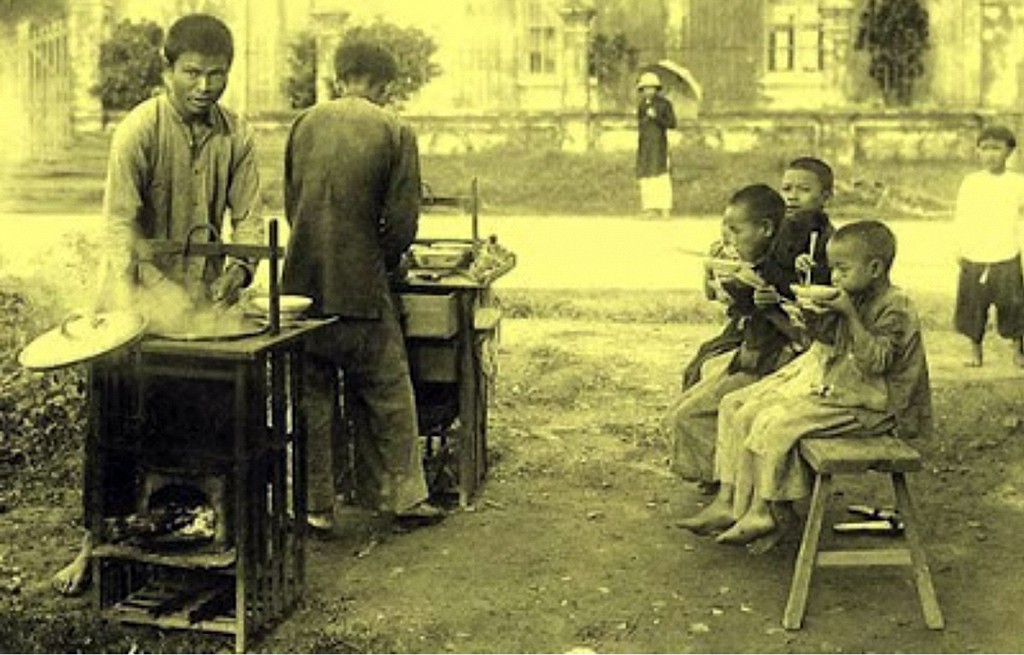
The transition from itinerant to fixed-location Pho marked an important stage in the popularization and perpetuation of this specialty. Pho restaurants have established themselves at well-defined addresses, usually in strategic districts, close to the nerve centers of Hanoian’s daily lives. The fixed location has enabled the establishments to build up a solid reputation and win the loyalty of an ever-growing clientele.
In a Pho restaurant, the Pho preparation process is often shown. The chef, positioned at the entrance to the establishment, prepares each bowl of Pho in full view of customers, allowing them to admire the skill and expertise required to make this dish. This proximity also allows customers to personalize their order, by choosing the ingredients they want or don’t want in their Pho.
Not only contributed to the growing popularity of these establishments themselves but the fixed locations have also reinforced the identity of each address, making them must-visit places for Pho lovers, both local and international, when they come to Hanoi.
Pho Nam Dinh: Local pride elevated to National Heritage
Renowned for its sophistication and uniqueness, Nam Dinh-style Pho has been officially elevated to the rank of national intangible cultural heritage by the Ministry of Culture, Sports and Tourism. This elevation not only represents a victory for local gastronomy but also a great source of pride for the local people, who regard the dish as an authentic staple of their cultural heritage and identity.
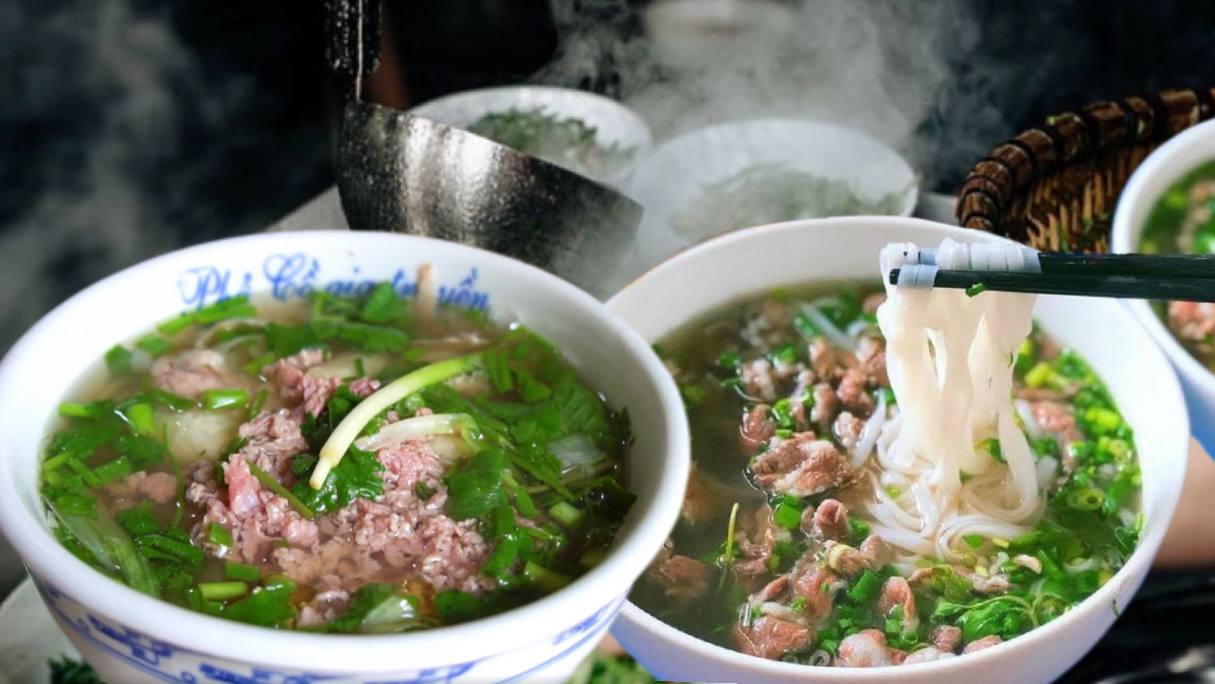
Pho Co in Nam Dinh
Pho Nam Dinh between tradition and innovation: A journey through time
Like its famous counterpart in Hanoi, Pho Nam Dinh has a long history stretching back many decades. The iconic Pho Cu Tang, located at 23 Hang Tien, remains a pillar of local gastronomy. First established in 1974, Mr. Vu Van Tang’s modest Pho mobile stand marked the beginning of a culinary legacy that deeply rooted Pho in the culture of Nam Dinh. As the years went by, the stand evolved, relocating in 1968 to 21 Hang Tien Street, before settling until today at 23 Hang Tien Street, where it continues to satisfy Pho lovers.

Pho restaurants in Nam Dinh: A model of familiarity and hospitality
Pho restaurants in Nam Dinh, though often small, are distinguished by their attention to detail and warm welcome. Like in Hanoi, much of the Pho preparation takes place at the restaurant entrance, allowing customers to follow every step of the process. The preparation area includes two pots, one for the broth, the other for hot water for reheating the noodles, and an area dedicated to assembling the dish.

Pho Cu Tang in Nam Dinh
The Pho is not the sole purpose diners come for; they also come to observe the chef’s technique from up close. Every gesture, from slicing the meat to adjusting the broth, is an integral part of the culinary experience. The typical setup of Pho restaurants creates a cozy and intimate atmosphere where diners can appreciate the complexity and dedication that the chef puts into each bowl of Pho. Furthermore, thanks to the open, interactive setting, diners can fully feel the depth of Nam Dinh-style Pho, a reflection of know-how passionately passed down through generations. The preparation process, visible to all, is a tribute to the local culinary art and contributes to the enrichment of the gastronomic experience, transforming each meal into a true journey through time.
Nam Dinh, the homeland of Pho Artisans
Nam Dinh, a province rich in culinary traditions, is often referred to as the cradle of Pho, with around 300 establishments located mainly in Nam Dinh City and Nam Truc district. Three villages, Van Cu, Giao Cu, and Tay Lac, located in the Dong Son Commune, are particularly renowned for their ties with this emblematic dish. These villages are home to some 600 inhabitants who perpetuate the art of Pho, passing on their mastery to succeeding generations.
Far more than a dish, Pho Nam Dinh embodies an integral part of the national intangible cultural heritage, reflecting the daily life and spirit of the people of Thanh Nam over the generations. The making of Pho demands great finesse and meticulous attention at every stage, from selecting the ingredients to stewing the broth and assembling the noodles soup.
Inside each serving of Pho Nam Dinh, diners will experience not only a symphony of rich, intricate flavors, but also the deeply ingrained cultural heritage of the region. Local artisans, the true custodians of this fine culinary know-how, play a crucial role in preserving and promoting this specialty, ensuring that Pho Nam Định continues to captivate palates and hearts wherever it is served. It is owing to the unwavering passion of the artisans that Pho Nam Dinh has gained a special place in the hearts of food lovers.
My Quang: The Culinary Essence of Quang Nam Province
My Quang (also spelled Mi Quang), or Quang noodles, is far more than a mere culinary delight of Quang Nam Province. It stands as a profound emblem of the region's rich cultural heritage and historical legacy, embodying the intricate exchanges and cultural adaptations of the Vietnamese people in this land.

Historical origins and southward migration
According to historical records, Quang noodles originate in the southward migration of Dai Viet inhabitants following the conquest of the Quang Nam region. This historical event, led by King Le Thanh Tong’s campaign in 1471, laid the foundations for the region’s development and colonization. The inhabitants of Quang Nam created My Quang using local produce while integrating culinary influences from other regions of the country and from abroad.
Quang noodles: A symbol of creativity and cultural fusion
My Quang is the result of the creativity of generations of Quang Nam people, characterized by its quick preparation, ease of transportability, and ability to fit any time of day. It is owing to these features that My Quang has long become a mainstay in the daily lives of the region’s inhabitants. Culinary historians believe that, like Banh Tet, My Quang is living proof of the Quang Nam people’s development during the period of southward expansion.
Take a look at some historical sources. The earliest traces of rice noodles date back to the Tran dynasty, but it was not until the 17th century, with the flourishing of Hoi An Port that My Quang really took off. Hoi An, at the time a prosperous port, attracted numerous merchant ships from the Netherlands, England, Portugal, France, and Cambodia. These commercial exchanges allowed My Quang to soak up the culinary influences of Asia and Europe, making it a unique dish with multiple cultural nuances.
The art of making and the essence of cuisine
The My Quang we see today is not all about the outcome of fine culinary technique; it is also the fruit of a long series of cultural exchanges. The thick, yet supple noodles, made from rice flour, are the key to giving the dish a distinctive texture and flavor. Through the years, the people of Quang Nam have constantly innovated, developing various versions of Quang noodles, from chicken Quang noodles to shrimp and meat Quang noodles, to vegetarian Quang noodles, each with its uniqueness.

Another distinctive feature of My Quang is its simplicity in preparation, while at the same time offering a rich blend of flavors. This is how the dish has transcended the borders of Quang Nam province to become a favorite throughout the country, and beyond.
Quang noodles in modern-day
Today, Quang noodles have become a national culinary symbol, rising above the borders of Quang Nam Province. With almost 500 restaurants throughout, My Quang not only represents the gastronomy of Quang Nam but also plays an essential role in the cultural life of its inhabitants.
The recent recognition of Quang noodles as a national intangible cultural heritage emphasizes not only its significance to the Vietnamese people, but also its important role in promoting Vietnamese cuisine on a global scale. This dish will continue to be passed on, developed, and preserved, consolidating its place on the world gastronomic map.
Preserving and promoting Vietnam’s culinary treasures
To date, Vietnam has a number of culinary treasures recognized as national intangible cultural heritage, such as Pho Nam Dinh, Pho Hanoi, Quang noodles, and the craft of making Nuoc mam Nam O and Nuoc mam Phu Quoc. These recognitions mark the cultural value of these dishes and practices, in tandem with providing powerful incentives to preserve and promote them, thereby maintaining and developing Vietnam’s identity in the field of cuisine.
Recognition of culture: A pillar for preservation and promotion
According to the Department of Cultural Heritage under the Ministry of Culture, Sports and Tourism, the list of National Intangible Cultural Heritages of Vietnam now includes almost 500 elements, covering varied fields such as festive events, social practices, traditional crafts, oral traditions, performing arts and, of course, gastronomy. The inclusion of culinary treasures in this list is a crucial step in the preservation of Vietnamese gastronomic culture while demonstrating the attention paid by the authorities and the community to the preservation of national identity.
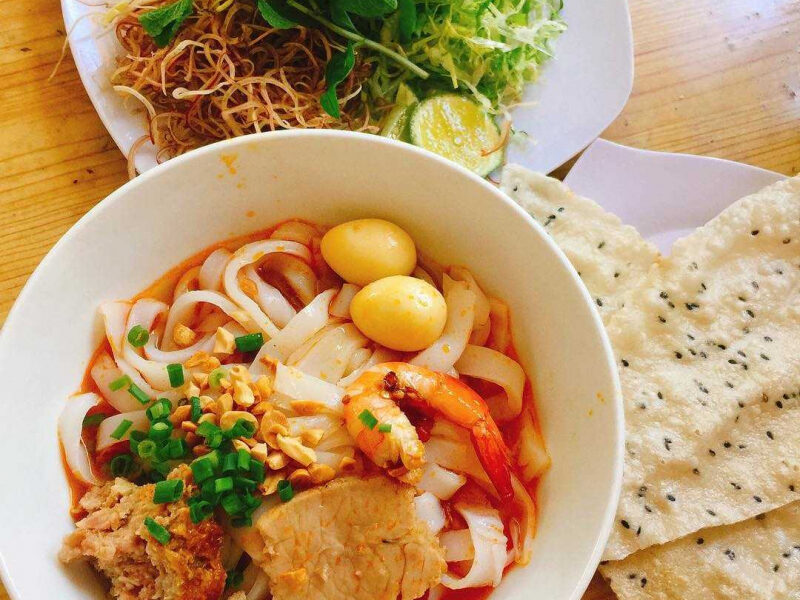
Future Perspectives for the Preservation of Culinary Heritage
In the future, the preservation and promotion of intangible cultural heritage related to gastronomy will be a priority for the relevant authorities. It will also require the collective mobilization of society as a whole to successfully safeguard these invaluable values for future generations. It is imperative that these culinary treasures continue to be protected, developed and celebrated, not only as a legacy of the past, but also as an asset for Vietnam's future on the world cultural stage.
TOLUNHA
Related articles:
>> The 10 traditional Vietnamese soups to taste
Comment
Other Blog
Categories
Latest News
on 31 Dec, 2025
on 31 Dec, 2025
 Español
Español Français
Français






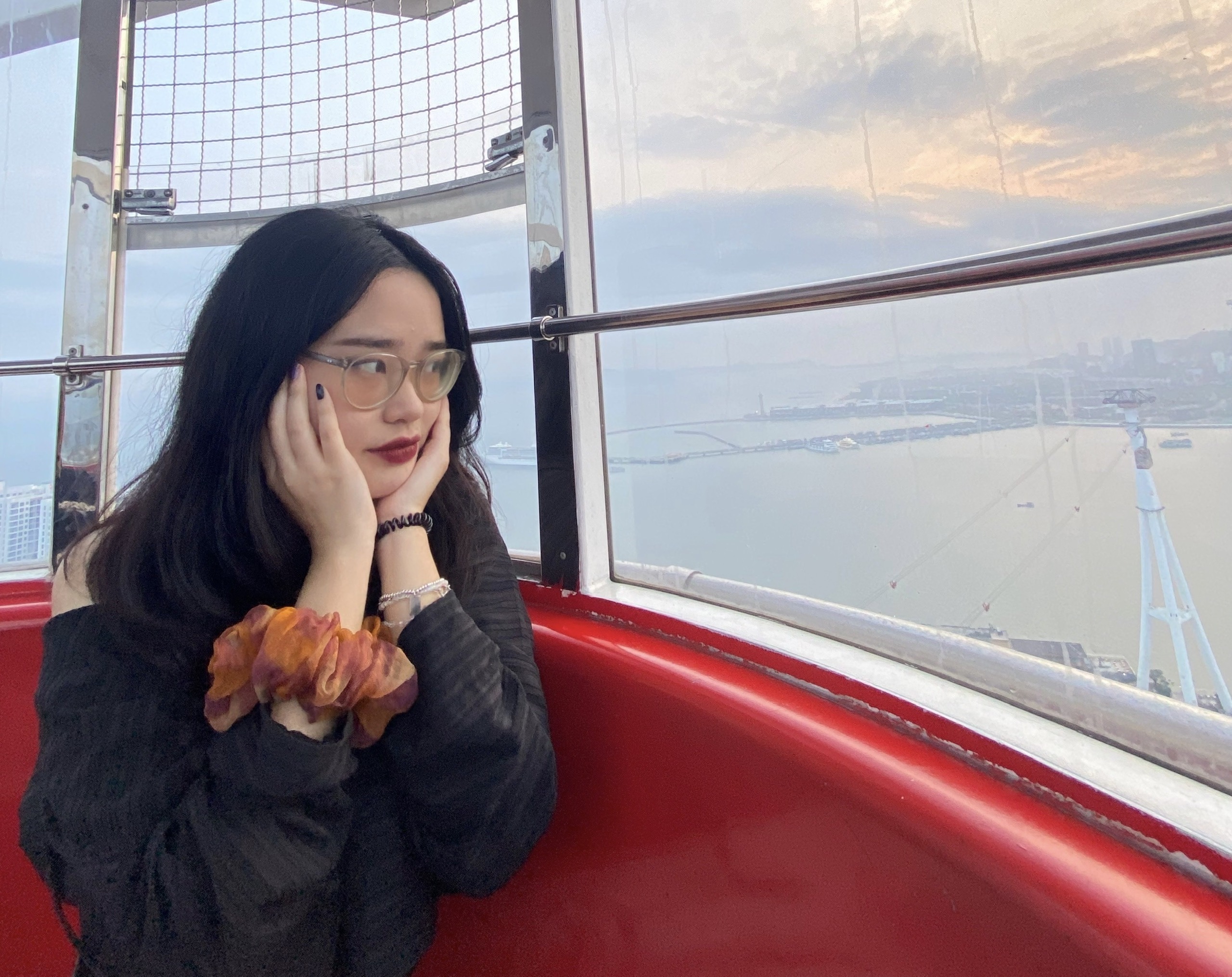
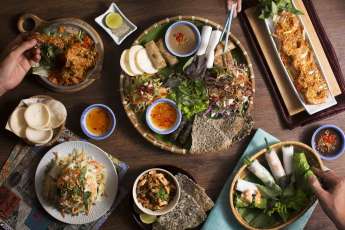


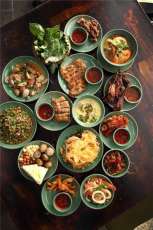
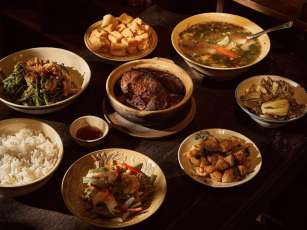








Morgane Ter Cock
on Dec 18, 2025HerbertPhomaMS
on Oct 19, 2025Lilyan Cuttler
on Oct 15, 2025Avenue17XC
on Sep 14, 2025Avenue18JL
on Jul 21, 2025